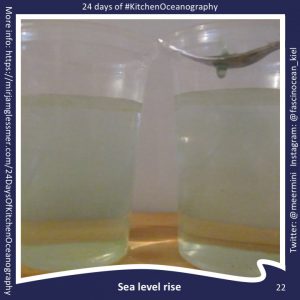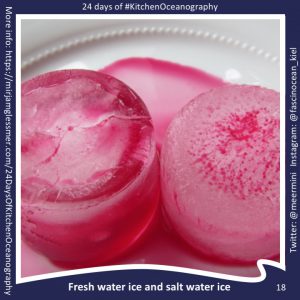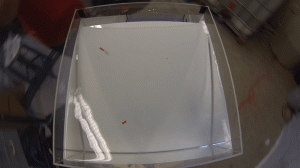
Tag: ice cubes



Planetary Rossby waves
I ran my new favourite experiment again, the planetary Rossby waves. They work super well on the DIYnamics table we built in Kiel and they also worked really well the other…

Did you know that uranine starts fluorescing again when the ice cubes melt?
Yes, I had to test that! :-D Why do I find this exciting? Because that means that a phase change of the water switches fluorescence as a tracer of that…

Did you know uranine doesn’t fluoresce when frozen?
Something else I found out when checking on my ice cubes yesterday: I had frozen a second tray* with ice cubes dyed with uranine (you know, the green stuff I…

Update on freezing ice cubes and the temperature distribution in our freezer
After writing the blog post on sea ice formation, brine release and what ice cubes can tell you about your freezer earlier today, I prepared some more ice cubes (because you…

Sea ice formation, brine release, or: What ice cubes can tell you about your freezer
Many of my kitchen oceanography experiments use dyed ice cubes, usually because it makes it easier to track the melt water (for example when looking at how quickly ice cubes…

Playing with a thermal imaging camera
Today I’ve been playing with a thermal imaging camera. Below you see a snapshot of my experimental setup, but before I tell you more about that experiment, a little bit of…

The icy elevator
Weird things happening when ice cubes melt. Remember I said that there were weird and wonderful things going on when I last ran the melting ice cubes in salt and…